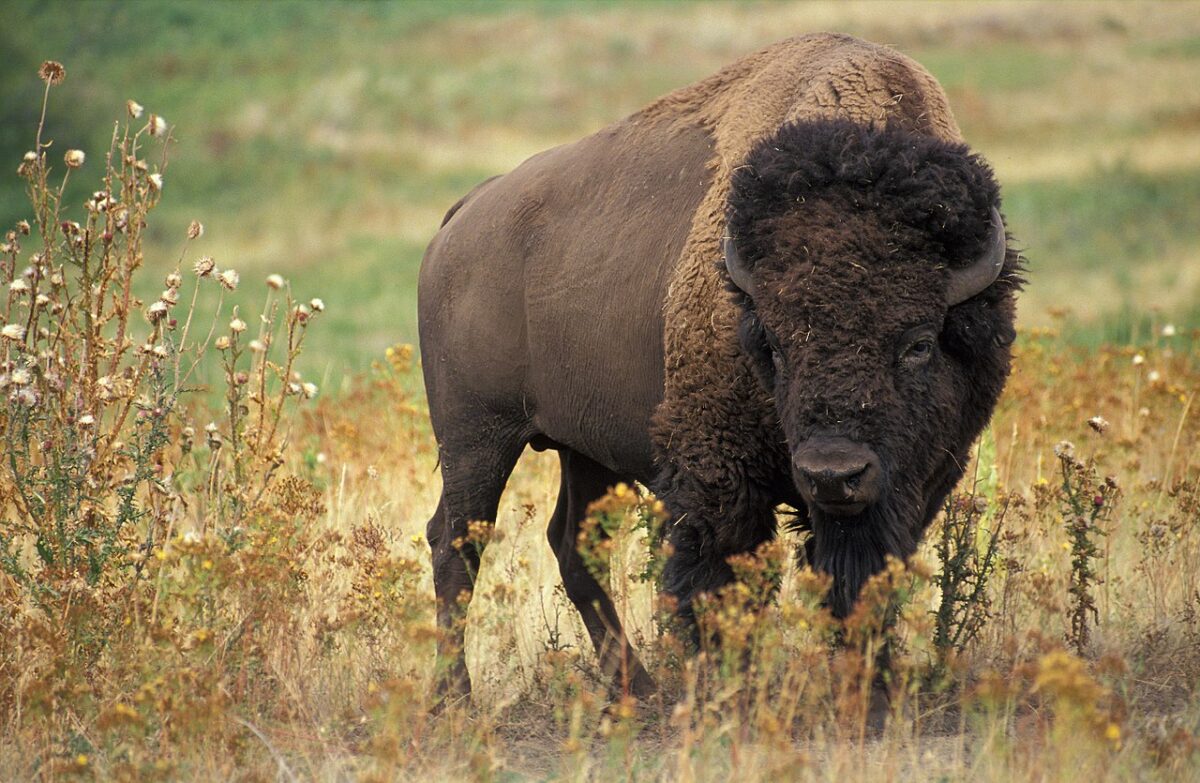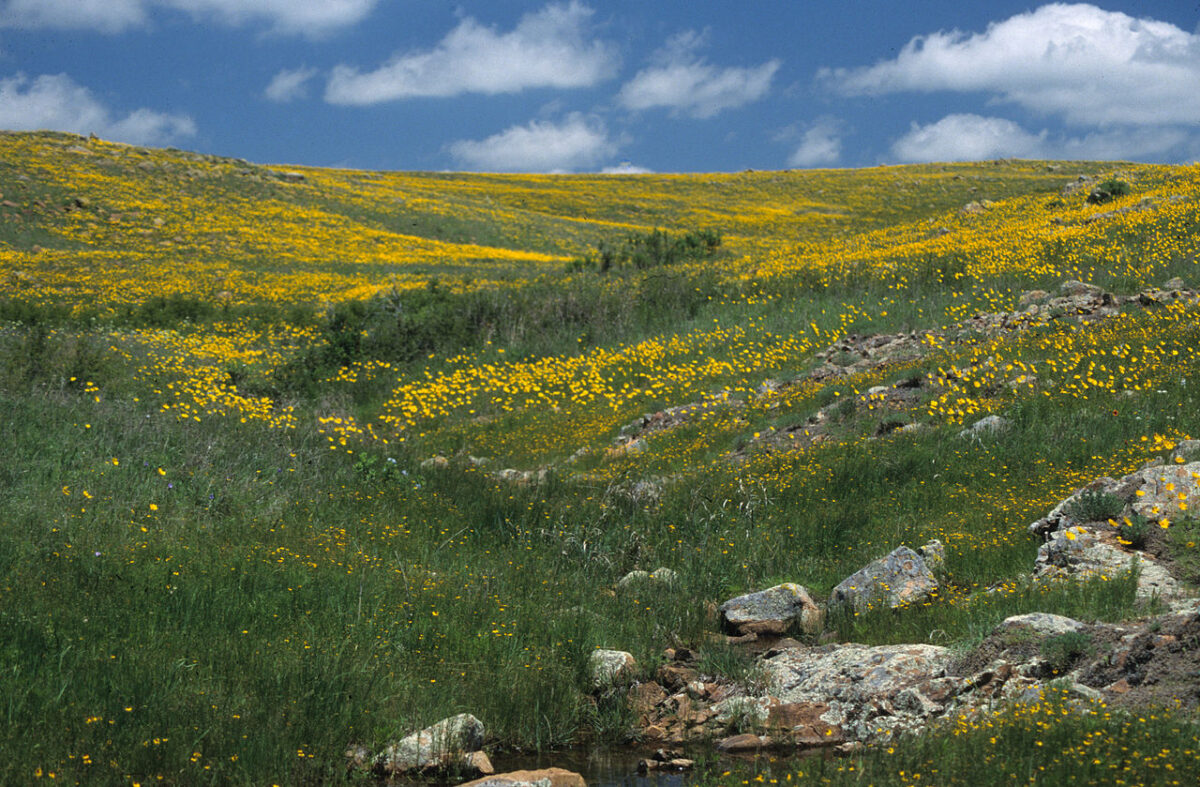Not nearly as fast as could be but they are slowly been reintroduced. I do think that the conversion to mob grazing of cattle will change all this for the better.
After all fifty buffalo along with an hundered beef works fine and helps channel agressions of wilder buffalo.
It will take anoter century for all this to be sorterd out
The Return of the Buffalo
TIMEJanuary 21, 2022
On a mild fall day in October 1907, a large buffalo bull by the name of Comanche arrived in Comanche County, Oklahoma, and was met at the train station by Quanah Parker, a Comanche Indian chief.
Chief Quanah dressed in full war feathers, which wasn’t common since he had come off the war trail and settled into a grand, two-story house with multiple wives and children. Using his long legs, he climbed up into an Army ambulance from the late 1800s that looked like the old-type Western stagecoach. The wagon body was painted black and was pulled by four mules. Yellow curtains hung from the windows.
It was 5 miles to the train depot in Cache from the chief’s ranch at the bottom of Mount Scott in the Wichita Mountains. He and his coachman made the 20-minute drive through the bluestem grass to welcome the return of the large, brown, shaggy-headed mammal (technically bison, but popularly called “buffalo”) to the Great Plains that had been its home for centuries. The rumbling of the majestic herds as they traveled in thousands created the sound that earned them the name “Thunder of the Plains.” Oklahoma’s last buffalo herd had been wiped out in 1878.
In addition to the bull, Comanche, 14 other buffalo (nine cows and five more bulls) were in crates coming in on the train from the New York Zoological Park. Decades before, the railroad had assisted in reducing the buffalo population by escorting hide hunters into the territory, and now, ironically, it assisted in helping to repopulate the region by escorting the buffalo back to where they were slaughtered in great numbers.
At about 3:30 in the afternoon, the advance train car arrived to a crowd of people and an air of excitement. Chief Quanah wasn’t the only Native American to greet the buffalo. Families from all the tribes in Indian Territory—soon to be the State of Oklahoma—gathered to witness the historic event. After all, their lives had been linked closely to the buffalo in the American West—physically and spiritually. In the almost 30 years the buffalo had been gone from the Plains, there were generations of children and young adults that were about to see one for the first time. Elders shared stories of their experiences with the wild animals.
The large bull, Comanche, put on a show and kicked out one end of his crate while being loaded onto a wagon that would take him and the others a short distance north of Cache to the Wichita National Forest and Game Preserve. The land was previously part of the Kiowa-Comanche-Apache Reservation that had been established in 1867 through the Medicine Lodge Treaty. When the reservation was opened in 1901 by land lottery, Congress had already set aside about 60,000 acres to be held as a forest reserve.
President Roosevelt
As fate would have it, about two and a half years before the buffalo returned to Oklahoma, a network of important and powerful friendships developed that would make establishing the nation’s first big-game animal and wildlife preserve possible. Chief Quanah was invited, along with five other Indian chiefs, to Washington, D.C., in March 1905 to participate in President Theodore Roosevelt’s inauguration parade. A few days later, each chief was given a chance to speak with the president.
The following month, President Roosevelt announced a hunting trip focused on gray wolves to Texas and Oklahoma and also announced his intention to spend time with his friend Chief Quanah. In addition to hunting wolves, the president also wanted to explore the Wichita Mountains and was made welcome at the Comanche chief’s home.
A seed for reintroducing buffalo into the wild had already been planted in President Roosevelt’s mind before his Oklahoma visit. American naturalist Earnest H. Baynes had spent an evening with the president in September 1904 and presented a detailed plan. Earlier in the year, Baynes had been appointed conservator of the Corbin Park Buffalo Reserve located near the edge of the Blue Mountain Forest in New Hampshire.
The proposal called for the president to acquire as many remaining American buffalo as possible from the private sector and then establish government-owned refuges throughout the Great Plains region. Oklahoma would be first because of the natural habitat that already existed. The plan was accepted, and, later in the year, the American Bison Society was established by President Roosevelt, Baynes, and William T. Hornaday, who was the Director of the New York Zoological Park. Hornaday was known as the founder of the American conservation movement.
time was lost in pulling pieces of the plan together. A buffalo herd was donated to the Bronx Zoo in New York by William Whitney of Massachusetts, who was financially well off and also interested in wildlife protection. Congress easily passed a game reserve bill. The first three months of 1905 were filled with making sure a solid foundation was in place to reintroduce the buffalo to the Great Plains. During the wolf hunt in April, and as a guest at Chief Quanah’s home, President Roosevelt explained Baynes and Hornaday’s plan for a buffalo refuge. Tears came to the hardened chief’s eyes.
Handpicked and Hand-fed
The 15 buffalo selected to be sent to the Wichita National Forest and Game Preserve were handpicked by Hornaday from several bloodlines to avoid inbreeding. He studied herd dynamics and genetic integrity. He even fed by hand the Bronx Zoo buffalo herds. From the time Hornaday discovered in 1889 that only 1,091 wild and captive buffalo existed in North America, he worked relentlessly to save the species. He even requested detailed reports on the grasses found in the Wichita Forest Reserve in Comanche County.(Jonathan C. Wheeler-flickr /CC BY 2.0)
After two years of detailed planning, the 15 buffalo from the Bronx Zoo were loaded on train cars at Fordham Station in New York, headed for Oklahoma’s national preserve. Hornaday made sure that each one had a padded compartment in Arms Palace cars—the kind used for valuable show horses. He had hand-fed the herd and now spared no expense to pamper them. After seven days on the rolling boxcars, they arrived. Chief Quanah stood in silence, perhaps soaking in what he considered to be a holy moment. It was the fulfilling of a prophecy and a vision. Quietly, he began to help load the buffalo onto wagons for the last leg of their journey, just north of the chief’s home.
The release stirred up a great dust cloud, and the Plains Indians celebrated the homecoming of the “Great Spirit’s cattle.” The extinction had been reversed, and the conservationists began to seek other prairie lands to duplicate their success. The buffalo was named America’s “National Mammal” in 2016 and, like the bald eagle, became an official symbol of the United States. Along with the eagle, the buffalo is one of the greatest conservation success stories in the nation’s history.
This article was originally published in American Essence magazine.




No comments:
Post a Comment